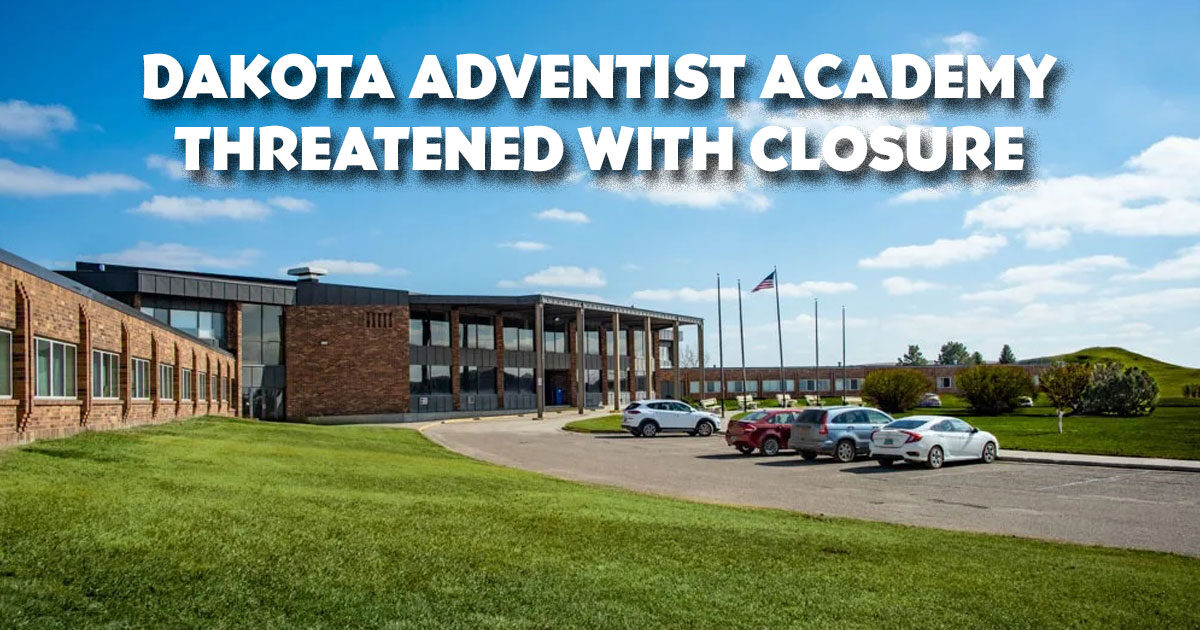Dakota Adventist Academy Threatened with Closure at End of School Year.
9 March 2025 |
After almost 50 years of operation, Dakota Adventist Academy (DAA) could close at the end of this school year, according to a letter sent out widely by the Dakota Conference of Seventh-day Adventists. While the letter asks for money, it also makes clear that faced with astonishingly low enrollment, even sacrificial giving may not be enough:
Enrollment has reached a historic low of just 22 students for the 2024-2025 school year. Financially, the situation is equally dire. While the sale of farmland provided temporary relief, the operational needs of the Academy far exceed what this resource can sustain.
The budget for operating DAA the the 2024-2025 school year is about $2.2 million—$100,000 per student.
Dakota Adventist Academy (DAA) was built as a replacement for the run-down Sheyenne River Academy in Harvey, North Dakota, which dated back to 1904. Plainview Academy in South Dakota closed in 1964.
In the mid-1970s a new academy was proposed by Wallace Carlson, a North Dakota businessman and Sheyenne River Academy graduate. It was pushed forward by conference president Ralph Watts and conference secretary Ed Scheresky. The site settled upon was a hillside overlooking the picturesque Missouri River. Wallace Carlson Construction completed the building in 1977 and DAA began operation that autumn with 200 students.
From the beginning, DAA was plagued with problems. The plant was far from finished: students were living and studying in a construction zone. Enrollment dropped after its first semester and continued declining over the years.
A constituency meeting in the autumn of 1978 revealed that the conference had already taken out loans far in excess of what church members in the small conference had been led to expect—by some accounts, in excess of $10,000,000. (Many said they had believed that Carlson was going to foot most of the bill.) General Conference (then) Vice President Neal C. Wilson chaired the meeting, and told the attendees that the larger organization couldn’t help out—it was their problem to solve.
Ralph Watts, who had pushed the building of the academy with assurances that students would come from all over the world to attend, promptly took a call to be president of another conference. In 1987, conference president John Thurber presided over closing the academy for a year. He also quickly took a call elsewhere.
With sacrificial giving the debt was eventually reduced, but the academy was never able fully to get out of crisis mode: the building had been designed to hold up to 300 students, but never operated with that number. Enrollment decreased as years passed, and for too much of its history there was well under 100 students. A Mid-America Union president in the 1980s, Joel Tompkins, once described DAA as “the biggest white elephant in denominational history.”
The problem was compounded by students’ not paying tuition. The letter from Dakota Conference said that accounts receivable for former students amounted to almost $600,000, with the figure for the 2023-2024 school year alone being $66,000.
The conference has scheduled an April constituency meeting to address the problem:
No one wants to see DAA close, yet under the current trends and conditions, DAA operations are not sustainable. In response, during the Executive Committee meeting on December 8, 2024, a resolution was passed to convene a Special Constituency Session to discuss DAA’s future viability. This session is scheduled for Sunday, April 6, 2025. It is crucial to note that the Conference does not have the authority to close the school; closure can only occur if 75% of the constituent delegates vote in favor of it. Without such a vote, the Academy will continue to operate until funds are depleted, which is projected to happen within the next one to two years, unless circumstances change.
It is unclear what will happen to the building, or what market value it might have. Dakota Adventist Academy’s troubles track with those of Adventist boarding high schools throughout North America, many of which have already closed or are operating in crisis mode.
To comment, click/tap here.




